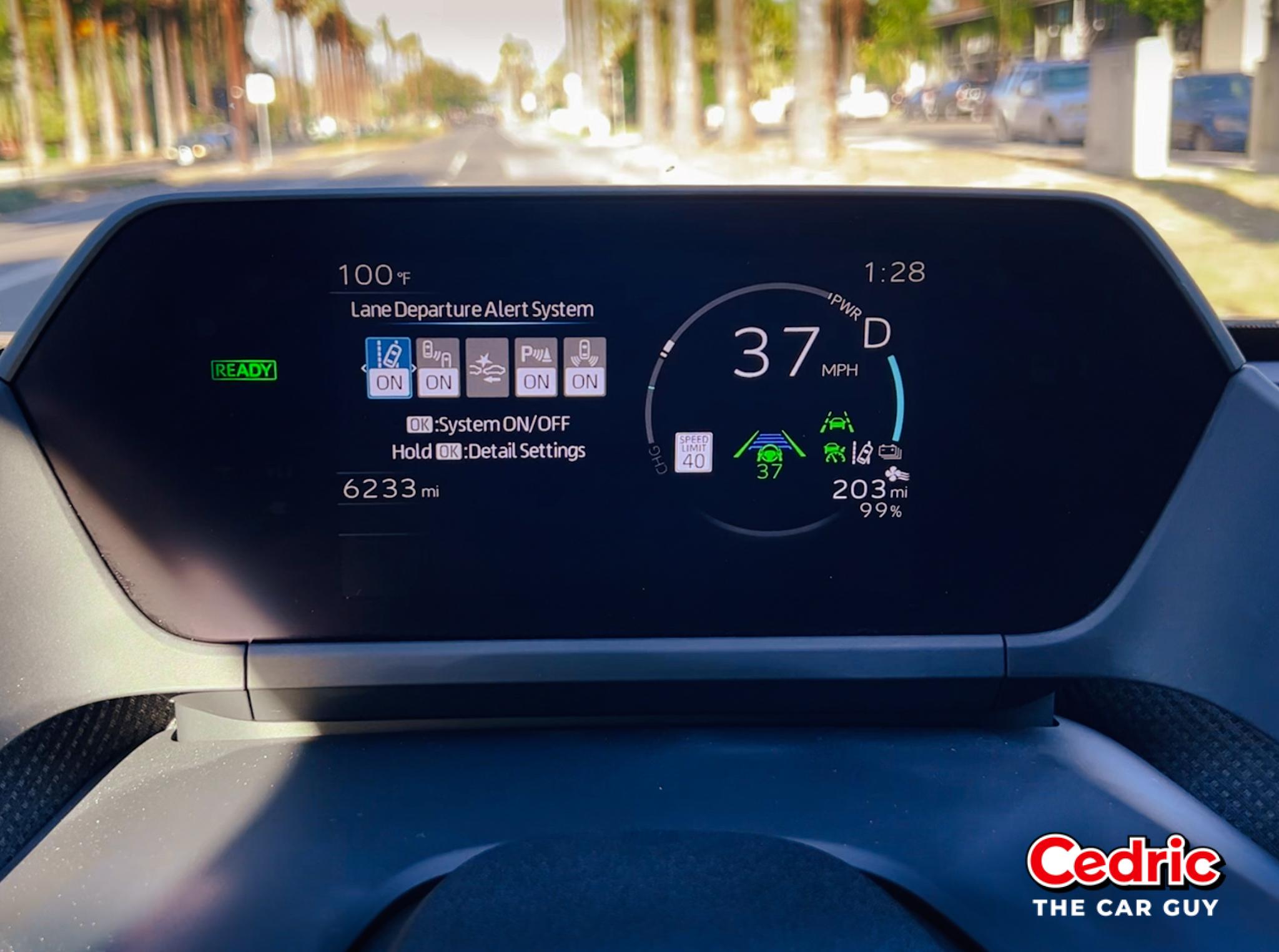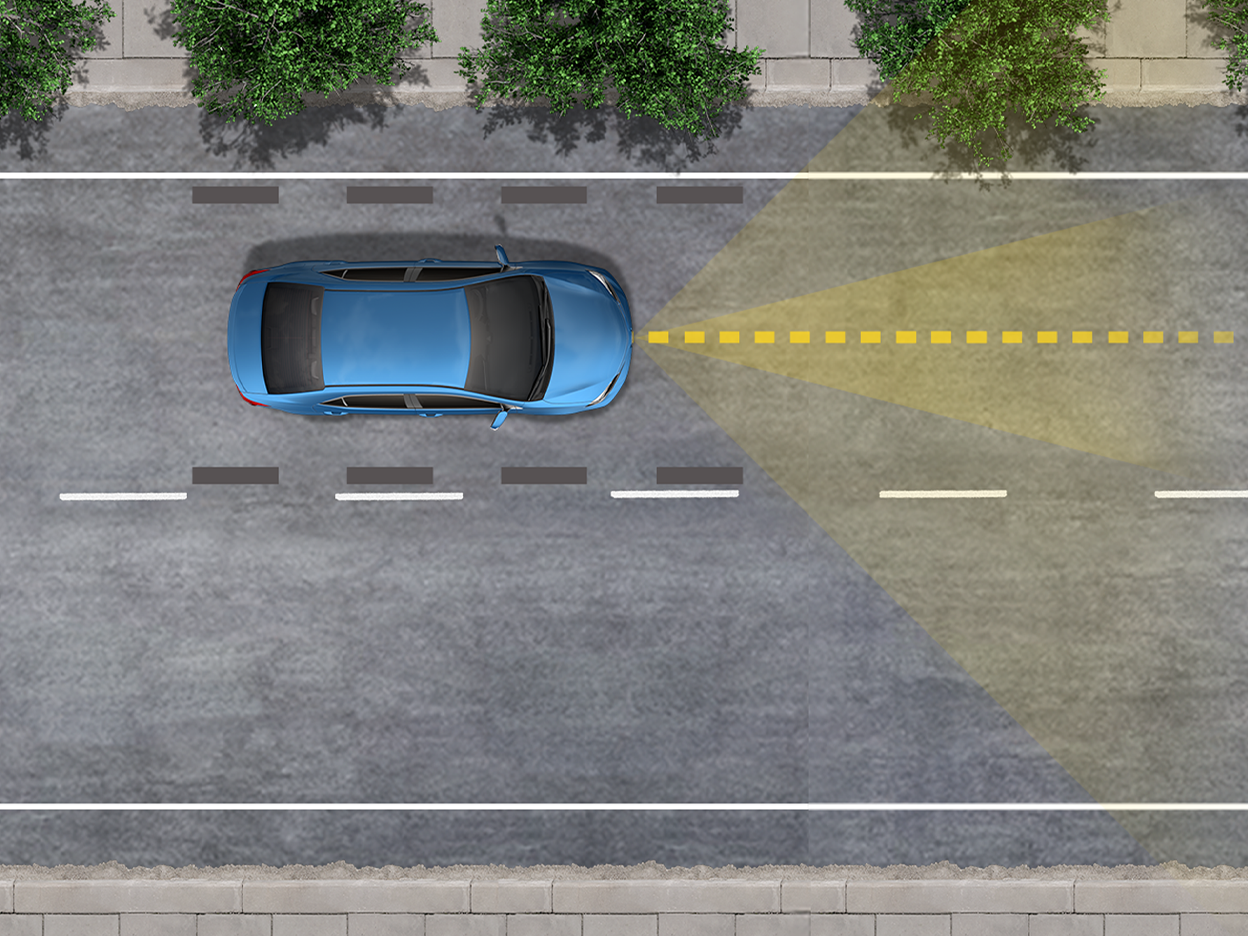What Is Toyota's Lane Tracing Assist (LTA)?

You may have been scrolling through the available features within your vehicle’s Multi-Informational Display (MID) and noticed a feature called Lane Tracing Assist. This feature works with other safety features within the Toyota Safety Sense suite.
LTA uses lane markers and preceding vehicles to help center a car in its lane. With DRCC on, the Emergency Driving Stop System can bring a vehicle to a stop. There is much more to it than this simple explainer, so let’s dive in to see how this feature works and how to use it.
Table of Contents
How Does the Toyota Lane Tracing Assist Work?
Toyota Lane Tracing Assist’s main feature is keeping the vehicle centered in its lane and spatially apart from the preceding vehicle. LTA works with the Dynamic Radar Cruise Control to set a predetermined distance between you and the vehicle in front of you. The DRCC preset has three or four distance settings depending on the vehicle and whether it is the DRCC with a Full-Speed Range or without.
The high-resolution, wide-angle front-facing camera system can detect lane markers and use lines on the road to help keep the vehicle centered in its lane. Toyota took this system a step further by enhancing the lane recognition features by detecting particular three-dimensional objects like guardrails to help define a lane better.
This system can also help when passing. Suppose a vehicle is in an adjacent lane. In that case, the system can make minor steering adjustments in the driving path when passing to give more space between vehicles.
Toyota LTA has one more trick up its sleeve: the Emergency Driving Stop System.
The Emergency Driving Stop System (EDSS) is a Lane Tracing Assist (LTA) component. EDSS checks the driver’s actions on the steering wheel and pedals to determine if the driver is unresponsive or not paying attention. The system can stop the car if the driver fails to respond to alerts asking them to take control.

How to use the Lane Tracing Assist
Here is a step-by-step guide to turning on LTA
- First, make sure you have the Dynamic Radar Cruise Control system on. To do this, it may vary based on the vehicle. Look for the Cruise Control button with a speedometer icon with the word “mode” underneath it.
- Pressing this button will toggle between Cruise Control Mode and Adaptive Cruise Control Mode.
- Ensure that when pressing the Cruise Control Button, you are in Adaptive Cruise Mode, which will display a car icon with a speedometer icon underneath.
- Drive above 20 miles per hour, then set your speed using the Cruise Control set button.
- This button will have a car icon and a speedometer icon underneath.
- Once activated, this icon on the Multi-Informational Display changes from white to green.
- To activate the LTA, look for a button with a car icon between the lane markers; this button toggles the LTA on and off.
- Once activated, the LTA icon on the Multi-Informational Display also changes from white to green.

Benefits of Toyota Lane Tracing Assist
Enhanced Safety: LTA helps to keep the vehicle centered within its lane, reducing the risk of lane departure accidents.
Driver Convenience: The system makes driving easier on highways and long trips by reducing the need for constant minor steering adjustments.
Reduced Driver Fatigue: By assisting with steering, the system can help decrease the physical and mental fatigue that drivers may experience during extended periods behind the wheel.
Improved Focus: With LTA managing some aspects of steering, drivers can focus better on the road and other driving elements, like checking mirrors or keeping an eye on other vehicles.
Increased Peace of Mind: Knowing that the system monitors the lane position can give drivers an added sense of security, especially in challenging driving conditions like heavy traffic or bad weather.
Compatibility with Adaptive Cruise Control: LTA often works with Adaptive Cruise Control to manage speed and steering, offering a more comprehensive assisted driving experience. Plus, it is compatible with other Toyota Safety Sense features like Proactive Driving Assist. PDA can provide gentle braking when driving into curves or steering to help support other driving tasks.

Toyota Safety Sense 3.0
Now standard across the lineup are Blind Spot Monitors (BSM) with Rear Cross-Traffic Alert (RCTA) for a safer, more convenient driving experience. New Traffic Jam Assist (TJA) facilitates stop-and-go driving on congested roads by controlling acceleration, braking, and steering within a speed range of 0 to 25 mph. Toyota Safety Sense (TSS) is an advanced suite of safety features designed to keep drivers and passengers safer on the road. These innovative technologies help avoid accidents altogether. Here is a list of components within the suite:
- Pre-Collision System (PCS): Detects vehicles, pedestrians, cyclists, and motorcyclists, providing warnings and emergency braking if needed.
- Lane Departure Alert (LDA): Warns drivers of unintentional lane departure and may provide corrective steering.
- Dynamic Radar Cruise Control (DRCC): Maintains a set distance from the vehicle ahead, adjusting speed accordingly.
- Lane Tracing Assist (LTA): Keeps the vehicle centered in its lane using lane markers and preceding vehicles.
- Automatic High Beams (AHB): Automatically switches between high and low beams based on surrounding traffic.
- Road Sign Assist (RSA): Detects and displays road signs to enhance driver awareness.
- Proactive Driving Assist (PDA): Provides braking or steering support to maintain distance and stay in lane.
Recap of Toyota LTA
Lane Tracing Assist can increase the convenience of driving in traffic to keep you spatially separated from the other vehicles on the road. This technology will guide you to stay within your lane and brake or at least warn you to brake to avoid a rear-end collision with other drivers in front of you. This feature will keep you driving safely away from other motorists in all situations, regardless of traffic conditions.
For a complete understanding of how LTA functions and its limitations, it’s important to refer to the Toyota Owner’s Manual or visit your local Toyota dealer.
Frequently Asked Questions
Toyota’s Lane Tracing Assist (LTA) is a feature that helps drivers stay centered within their lane on the road. It uses cameras and sensors to detect lane markings. It can make minor steering adjustments to help keep the vehicle in the middle of the lane. This feature is handy on highways and is often paired with adaptive cruise control for a more comfortable driving experience.
To turn on LTA:
- Activate Adaptive Cruise Control by pressing the ” mode ” button under a speedometer icon.
- Make sure you’re going over 20 mph and set your speed.
- Press the button with a car icon between lane lines to activate LTA. You’ll know it’s on when the icons on your display turn green.
The message “Lane Tracing Assist Unavailable” usually means the system can’t engage or function. This could be due to various reasons, such as unclear lane markings, lousy weather conditions, or a malfunction in the system itself. When you see this message, it means you’ll need to steer the vehicle manually, as the Lane Tracing Assist won’t assist you. Try cleaning the radar sensor located within the Toyota truck’s grille. On Toyota cars, the glassy plastic cover around the Toyota emblem usually has the radar located behind it; cleaning this sensor or the front-facing camera behind the rearview mirror can, in most cases, solve your problem. Always consult your Toyota Owner’s Manual for more information, or visit your local Toyota dealer.
Usually located in the front grille area and the front bumper, and sometimes within the rearview mirror housing where a camera might be positioned. These sensors and cameras work together to detect the lane markings on the road. However, the exact location may vary depending on the specific Toyota model. For the most accurate information, consult your Toyota Owner’s Manual or contact your local Toyota dealer.
Note: Always refer to the vehicle’s Owner’s Manual for more detailed information about your specific vehicle. Safe driving practices should always be followed. For more details, contact your local Toyota Dealer or visit Toyota.com.

Cedric Jackson
Cedric is a Sales Pro with 20+ years of experience. He is currently a Sales Consultant at Toyota of Riverside. He aims to share his passion for product knowledge of the Toyota brand here on his blog. Cedric writes content here and produces short-form videos on YouTube, Instagram & TicTok. Connect with him here or on all social media @ cedricthecarguy 🙏🏾🤙🏾

Cedric Jackson
Cedric is a Sales Pro with 20+ years of experience. He is currently a Sales Consultant at Toyota of Riverside. He aims to share his passion for product knowledge of the Toyota brand here on his blog. Cedric writes content here and produces short-form videos on YouTube, Instagram & TicTok. Connect with him here or on all social media @ cedricthecarguy 🙏🏾🤙🏾

